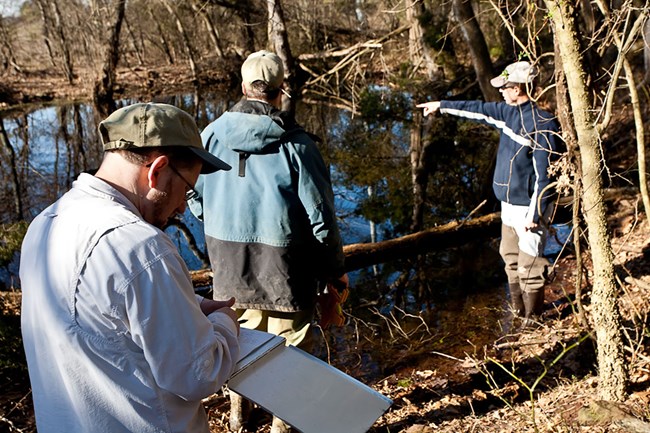
NPS/Paradis
The National Capital Region Inventory & Monitoring Network monitors air quality, amphibians, birds, forest pests, vegetation, invasive plants, stream water, and stream fish and macroinvertebrates at Manassas National Battlefield Park. The results of that monitoring provide park managers with scientific information for decision-making.
Manassas National Battlefield Park is made up of over 4,000 acres of forests, grasslands, streams, and ponds on rolling hills in the central Piedmont region. Nearly half the park is grassland that provides crucial habitat for grassland birds and pollinators while the other half is forest, ranging from early-successional Virginia pine stands to relatively mature oak-hickory and bottomland hardwood forests.
The park’s main natural resource management concerns are encroaching urban development, overpopulation of deer, and invasive plants and diseases. Stormwater management is a big concern for stream ecosystems. Regional air quality and land use patterns can have strong effects on park resources.
What's Happening in Manassas
NCRN Monitoring at Manassas by the Numbers
| What We Monitor | Sites at Manassas* | Monitoring Frequency | Information We Collect |
|---|---|---|---|
| Amphibians | 66 known wetland pools | Annual sampling on a subset of known wetlands. Wetland sites are monitored twice per sampling period |
Species occupancy and richness for salamanders, frogs, and toads in vernal pools |
| Birds – forest only | 24 (forest bird) 44 (grassland bird) |
Forest plots are monitored twice a year Grassland plots are monitored three times a year |
|
| Forest vegetation | 19 (forest vegetation) | Approximately a quarter of plots each year on a four-year cycle |
|
| Stream biota – fish and macroinvertebrates | At streams listed below | Periodic sampling 2007-2014, 2019-2023 |
|
| Stream water quality | 1 (stream site) on Young's Branch | Stream sites are monitored every other month |
|
Last updated: May 11, 2023
